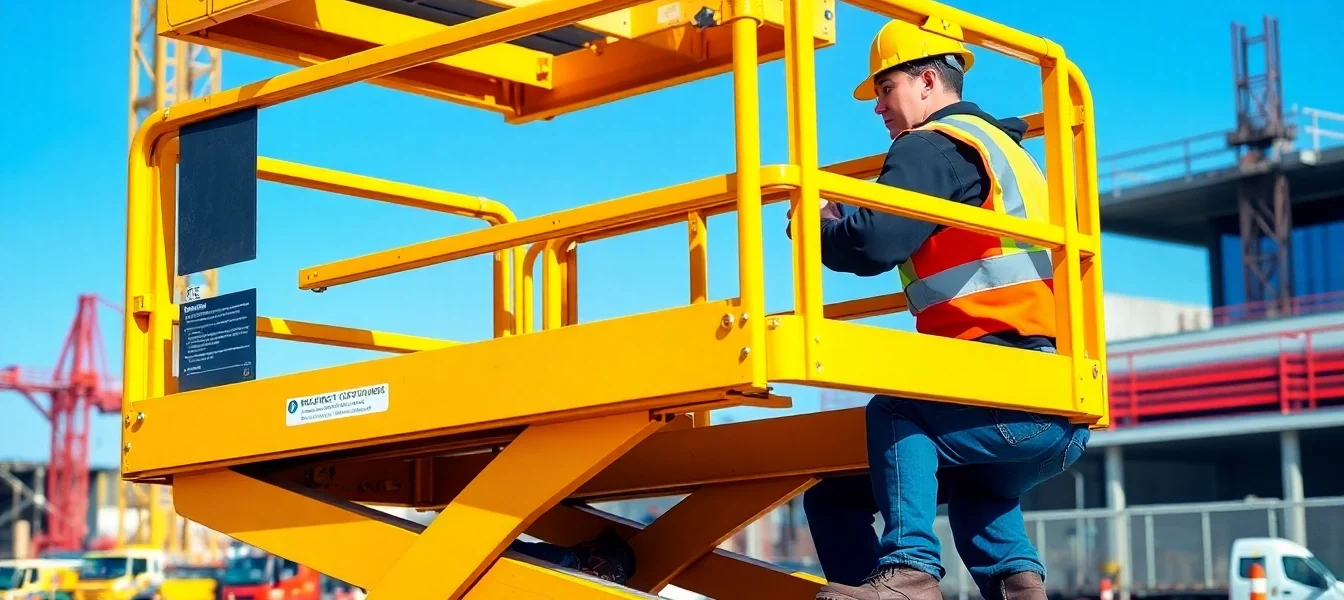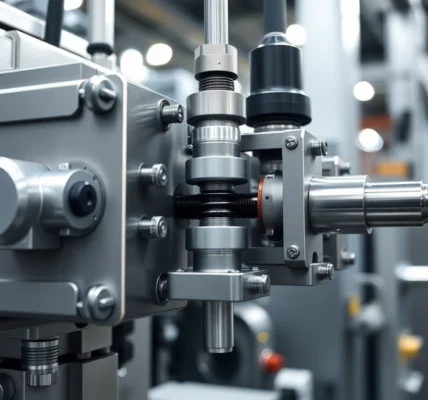Efficient Scissor Lift Rental Solutions for Your Construction Needs in the UK
Understanding the Basics of Scissor Lift Rental
In the dynamic construction and maintenance industries across the UK, working safely at height is a fundamental concern. Scissor lifts have become a vital piece of equipment, enabling workers to access elevated areas efficiently and securely. For projects of various scales and complexities, renting a scissor lift offers flexibility, cost savings, and immediate access to the latest technology. Whether you’re outfitting a commercial site, undertaking facade repairs, or installing lighting fixtures, understanding the core aspects of scissor lift rental is crucial to ensure safety, efficiency, and budget adherence.
Types of Scissor Lifts Available for Rent
Scissor lifts come in a variety of models tailored to different operational needs. The key types include electric, diesel, rough terrain, and narrow or compact models. Each caters to specific environments and project requirements, making it essential to select the right type to maximize productivity and safety.
- Electric Scissor Lifts: Ideal for indoor use, these lifts operate quietly with zero emissions, making them suitable for enclosed spaces like warehouses, shopping centers, and factories. They typically offer capacities ranging from 350kg to 1,000kg and lift heights up to 12 meters.
- Diesel Scissor Lifts: Designed for outdoor applications, these models are robust, powerful, and capable of handling uneven rough terrain. They often exceed electric models in height, reaching up to 20 meters, and are preferred on construction sites.
- Rough Terrain Scissor Lifts: Equipped with heavy-duty tires and increased ground clearance, these lifts are essential for outdoor projects on uneven surfaces, such as landscaping and large-scale construction work.
- Narrow and Compact Models: These are specifically engineered for interiors with tight access or constrained spaces, offering agility without sacrificing lift capacity or height.
Understanding these options aids in selecting a model that fits both the geographic and structural constraints of your project, ensuring optimal operational efficiency.
Key Features to Consider Before Renting
Before finalizing a scissor lift rental, consider several critical features to ensure the equipment meets your project’s demands:
- Load Capacity: Verify maximum weight limits, including personnel, tools, and materials, to prevent overloading and enhance safety.
- Maximum Platform Height: Determine the height needed for your tasks, factoring potential obstructions and the height of the structure or fixture being accessed.
- Platform Dimensions: Evaluate platform width and depth to accommodate your team and tools comfortably.
- Drive and Maneuverability: Assess whether the lift needs to be self-propelled and capable of maneuvering in tight or uneven spaces.
- Power Source: Decide between electric and diesel options based on indoor/outdoor use, noise restrictions, and environmental constraints.
- Safety Features: Look for emergency descent controls, guardrails, overcurrent protection, and tilt sensors.
Choosing equipment with these features aligns your operational workflow with safety standards and project specifications, reducing delays and risks.
Common Uses and Applications in Construction
Scissor lifts have broad utilization across construction, maintenance, and event management sectors. Their main applications include:
- Building Maintenance: Painting, window cleaning, facade inspections, and repairs.
- Electrical and Plumbing Work: Installing wiring, conduits, lighting, and piping at elevated levels.
- Interior Fitting: Installing shelving, ceiling fixtures, or HVAC systems indoors with minimal disruption.
- Exterior Construction: Erecting and finishing external facades, cladding, or roofing tasks on multi-story buildings.
- Event Setup: Rigging lighting, sound equipment, or decorating large venues.
The versatility of scissor lifts over traditional scaffolding allows quick setup, easier repositioning, and safer working conditions, thus improving project timelines and costs.
Choosing the Right Scissor Lift for Your Project
Indoor vs Outdoor Scissor Lifts
One of the fundamental considerations when selecting a scissor lift is the working environment. Indoor lifts typically emphasize electric power, compact footprint, and maneuverability, while outdoor models require robustness, higher reach, and weather resistance.
Indoor Applications:
- Factories and warehouses
- Commercial interiors
- Indoor installation projects
Outdoor Applications:
- Construction sites
- Facade works
- Landscaping projects
Evaluating your environment ensures that you choose a model optimized for your project’s safety and efficiency.
Electric vs Diesel Models: Pros and Cons
Power source plays a vital role in operational decisions. Electric models are preferred for indoor, noise-sensitive, and emissions-free environments, whereas diesel lifts excel outdoors where power and durability are paramount.
Advantages of Electric Scissor Lifts:
- Zero emissions and minimal noise
- Lower operating costs
- Ideal for enclosed spaces
Advantages of Diesel Scissor Lifts:
- Higher engine power for rough terrain
- Greater lifting capacity and height
- Suitable for outdoor, large-scale projects
Weighing these factors helps in selecting the right model to maximize safety, cost-efficiency, and project progression.
Assessing Height and Load Capacity Requirements
Accurate measurement of your project’s height and load requirements is critical for safe and effective equipment selection. Overestimating can lead to unnecessary costs, while underestimating risks safety and productivity.
Begin by clearly defining the maximum working height needed, adding a safety margin for unexpected obstructions. Simultaneously, assess the total weight of personnel, tools, and materials to ensure the lift’s load capacity is sufficient.
This meticulous planning minimizes risks of tipping, structural failure, or operational delays, ultimately safeguarding your workforce and project timelines.
Best Practices for Safe and Effective Rental Usage
Operator Training and Safety Protocols
Proper training is non-negotiable to ensure safe operation of scissor lifts. Operators should be familiar with machinery controls, load limits, and emergency procedures. Training programs should include hands-on practice, safety awareness sessions, and regular refreshers.
Implementing strict safety protocols, such as wearing harnesses and helmets, ensures compliance with UK health and safety standards, reducing accident risks.
Inspection and Maintenance Guidelines
Routine inspections before each use are essential. Check for hydraulic leaks, mechanical defects, and proper functioning of safety features. Adhering to manufacturer maintenance schedules prolongs equipment life and prevents costly breakdowns.
Maintain a detailed log of inspections and servicing, and promptly report any issues to your rental provider to enable repairs or replacements, ensuring continuous safe operation.
Maximizing Productivity and Minimizing Risks
Utilize site planning tools to optimize lift placement and movement. Use GPS or markers for precise positioning. Limit access to trained operators and enforce safety zones to prevent unauthorized use.
Weather conditions such as high winds or rain should be carefully monitored, and work should be suspended if safety is compromised. Clear communication and proper PPE usage are vital components in risk mitigation.
Cost Considerations and Rental Process
Pricing Factors and Budget Planning
The cost of scissor lift rental varies depending on factors such as lift height, type, duration, and rental company policies. Daily rates tend to be more expensive per day compared to weekly or monthly rentals, which offer significant savings for long-term projects.
Additional costs may include delivery/pickup, fuel, insurance, and optional accessories like extension decks or safety harnesses. Accurate budgeting entails assessing these elements early in project planning.
Rental Duration and Delivery Options
Flexibility in rental periods can impact overall costs. Many providers offer daily, weekly, or long-term rentals, with options for same-day delivery or scheduled pick-up to match project timelines.
Coordination with your rental provider ensures equipment availability when needed, reducing idle times and maintaining workflow efficiency.
Additional Accessories and Support Services
Enhance operational safety and efficiency with accessories such as extension decks, out riggers, or transfer platforms. Support services like operator training, onsite assistance, and maintenance contracts contribute to seamless project execution.
Partnering with a comprehensive rental provider can streamline procurement, support, and compliance, saving operational headaches and ensuring high equipment uptime.
Why Partner with a Trusted Scissor Lift Rental Provider in the UK
Experienced Customer Support and Consultation
Leading rental companies provide expert guidance tailored to your project’s specific needs. From selecting appropriate models to complying with safety standards, their consultancy ensures optimal outcomes.
Wide Range of Equipment and Flexible Terms
Access to diverse equipment types—including electric, diesel, and hybrid models—paired with flexible rental durations and delivery options, enables you to adapt to changing project demands efficiently.
Ensuring Compliance and Reliable Maintenance
Trustworthy providers maintain equipment to rigorous safety standards, conduct regular inspections, and offer timely support. Their compliance with UK safety legislation fosters a risk-free working environment.
Downloading operation manuals, safety datasheets, and certifications ensures accountability and regulatory adherence.


